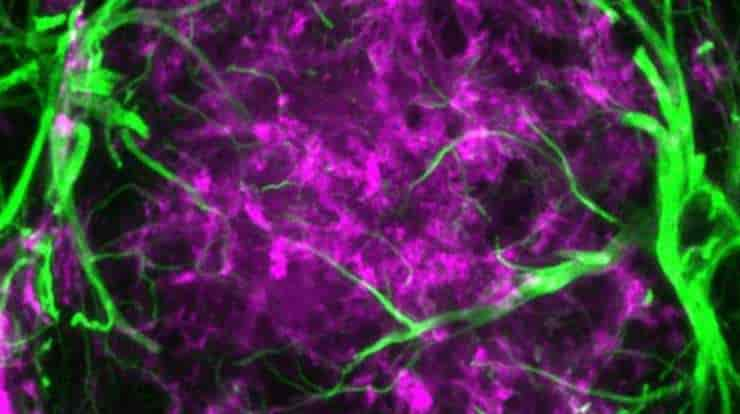The underlying electrophysiological indicators of subarachnoid hemorrhage have been analyzed by a group of researchers in Germany. Subarachnoid hemorrhage is the second most common type of brain hemorrhage, and can lead to ischemic stroke within a matter of days. This type of hemorrhage occurs in the area between the membranes surrounding the brain. Patients with…
Category: Neurology
Myelin Enhances Neuron Growth In Spinal Cord Injuries
Adult rat myelin stimulated axonal outgrowth in rat neural precursor cells (NPCs) and human induced pluripotent (iPSC)-derived neural stem cells (NSCs), researchers at University of California San Diego School of Medicine report. Recovery after severe spinal cord injury is notoriously fraught, with permanent paralysis often the result. In recent years, researchers have increasingly turned to…
Molecular Hallmarks of Motor Neuron Death in ALS Identified
A protein known as Splicing Factor, proline- and glutamine-rich (SFPQ), which normally resides inside the cell nucleus, exits the nucleus in diseased motor neurons, a new study from The Francis Crick Institute shows. The finding is the result of a collaborative group of clinical neurologists, molecular biologists and computer scientists working together to solve the…
STXBP1 Encephalopathy Disease Mechanisms Identified
Cortical hyperexcitability, protein instability, and haploinsufficiency are disease mechanisms underlying the disorder STXBP1 encephalopathy with epilepsy, new research from a group in the Netherlands indicates. STXBP1 encephalopathy with epilepsy is a condition characterized by recurrent seizures (epilepsy), abnormal brain function (encephalopathy), and intellectual disability, including autism spectrum disorders. It is caused by mutations in the…
Parkinson’s Disease And Tuberculosis Link Discovered
The mechanism our immune cells use to clear bacterial infections like tuberculosis might also be involved in Parkinson’s disease, a new study led by the Francis Crick Institute, Newcastle University and GSK indicates. The findings provide a potential explanation of the cause of Parkinson’s disease and suggest that drugs designed to treat Parkinson’s might work…
Larger Brain Volumes Tied To Better Diet
A healthy diet rich in vegetables, fruit, nuts and fish could be associated with having a bigger brain, according to a new study. The study involved 4,213 people in the Netherlands with an average age of 66 who did not have dementia. “People with greater brain volume have been shown in other studies to have…
Parkinson’s Gait Freezing Reduced By Cognitive Training
Significant reduction in the severity and duration of gait freezing in Parkinson’s patients is being reported by a team of researchers who applied a combination of cognitive training and dopaminergic medication. Cognitive processing speed improvement and reduced daytime sleepiness were also seen. Freezing of gait (FoG) is a disabling symptom of Parkinson’s Disease, characterized by…
Adaptive Deep Brain Stimulation For Parkinson’s
A new adaptive deep brain stimulation method to treat the symptoms of Parkinson’s disease has been developed by scientists. In the new method, stimulation changes in real time, based on the patient’s neural signals, as compared to traditional deep brain stimulation, which is constant. Deep brain stimulation (DBS) can be an effective treatment for Parkinson’s…
P2Y1 Astrocyte Finding Points To New Approach Against Alzheimer’s
Blocking the P2Y1 receptor on astrocytes normalized brain function and improved memory performance in studies with mice, a study by scientists of the German Center for Neurodegenerative Diseases (DZNE) reports. The finding points to a potential approach against Alzheimer’s disease. Alzheimer’s disease is an incurable brain disorder leading to dementia. its mechanisms remain incompletely understood.…

